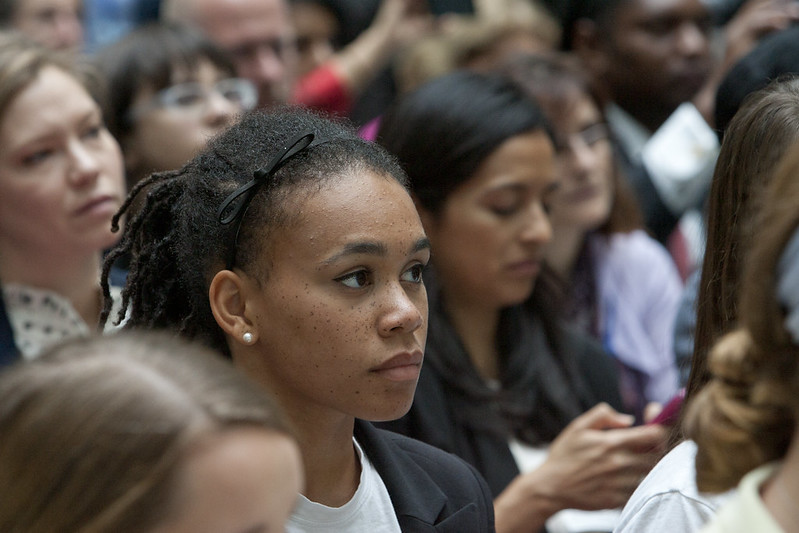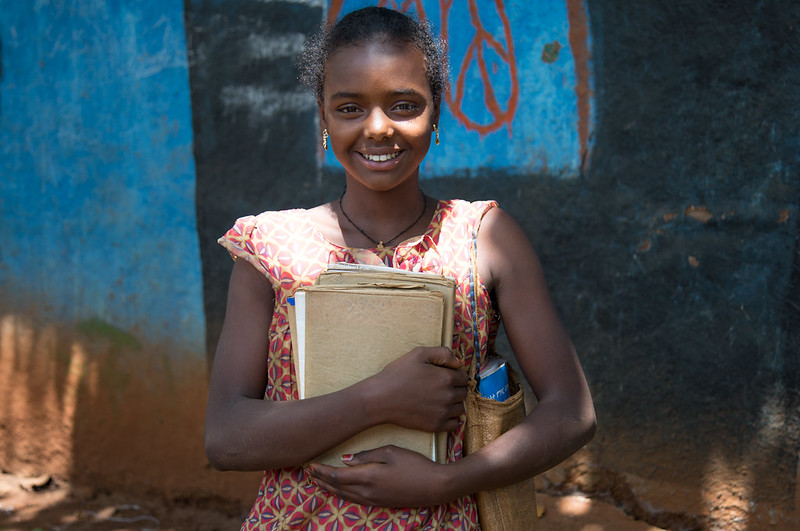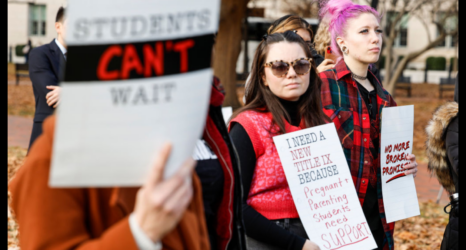The lack of strong action by the Biden administration and Congress for adolescent girls globally will have impacts for decades to come.

How important are adolescent girls really?
Every year on October 11, the world celebrates International Day of the Girl and highlights the power girls have to be agents of change. Young women like Malala Yousafzai and Greta Thunberg are powerful examples of how girls can change the world. There are thousands, if not millions, of other examples of adolescent girls who have innovative ideas to help solve the world’s most pressing issues, or who are making their communities better places to live.
Every year there is renewed hope for girls—but at the same time girls still face disproportionate risks, lack access to key services and are unable to exercise their rights.
The risks of being an adolescent girl are startling and are perhaps worse this year than any year since we began celebrating International Day of the Girl. The U.S. government can—and must—act to address the holistic needs of girls and ensure that U.S. foreign assistance supports all children and youth from birth to early adulthood in ways that acknowledge and support their many talents and diverse needs.
UNICEF estimates that an additional 10 million girls will be married as children due to COVID-19’s impacts. Girls who marry early are less likely to attend school and are at risk for a host of lifelong impacts related to their health and socioeconomic status that their unmarried peers are not.
It’s not just child marriage that is increasing due to the pandemic, though. There are also massive increases in malnutrition and learning loss. Millions of children will become orphans due to the COVID-19 related deaths of mothers, fathers, or other primary caregivers.
And while internet usage is up more than 50 percent in many countries due to COVID-19, which increases access to educational resources and social connectivity for girls, it also puts them at a significantly higher risk of being targeted for sexual abuse and exploitation.
Through all of this, it is rare that the voices of girls are centered, their solutions considered, and their needs addressed through policy and action. U.S. foreign policy and foreign assistance funding was fragmented before the pandemic, and this fragmentation creates an enormous gap that frequently leaves adolescent girls out of programs intended for children or women. They are too old to be considered children, and too young to be considered women. U.S. funding mechanisms are complex and make it extremely difficult for girl-led organizations to access funding. Larger development implementers often fail to consider girls as key stakeholders in the design, implementation and sustainability of their work.
There are ways to close these gaps: The best and biggest way would be for President Biden to sign an executive order directing U.S. foreign aid implementing agencies to develop a whole-of-government strategy for all children and youth. Currently, each agency defines the age ranges that define youth—and the approaches to addressing their needs and centering their voices—very differently. High-level leadership, funding and policy directives are necessary to ensure that the government is coordinating with itself and communicating with civil society and the public in a transparent way.

If the Biden-Harris administration is not willing to undertake a bold initiative for the world’s children and youth, Congress could pass legislation in key issue areas such as education and civic engagement that would not only allow girls to learn and lead but would have additional benefits to their health, economic security, and more.
For example, passing and signing into law the Girls’ Leadership, Engagement, Agency and Development (Girls LEAD) Act (S.634, H.R.1661) would increase girls’ civic and political participation and strengthen a pipeline of female leaders by supporting girls’ engagement in policy spaces and building their leadership skills. This will also help them navigate and avoid risks they may face in adolescence, such as child marriage or dropping out of school.
Congress could also pass the Keeping Girls in School Act (S. 2276 and H.R. 4134). which would support the additional 11.2 million girls who may not return to school as a result of the pandemic and the 132 million girls who were already out of school before it began. These pieces of legislation would close enormous gaps and support adolescent girls in vital ways. Alone, however, they are not enough to ensure a whole-of-government approach for adolescent girls and for all children and youth.
Empowering girls as leaders in their communities and globally benefits us all and should be a priority.
President Biden made addressing gender-based violence part of his campaign, building upon what was a signature issue both during his time in the Senate and as vice president. As recently as this summer, Vice President Harris gave opening remarks at the Generation Equality conference in Paris—a move many believed signaled that women and girls were a priority for the administration. The Biden-Harris administration stood up the first-ever White House Gender Policy Council, which coordinates federal efforts to advance gender equity and equality. The U.S. Global Strategy to Empower Adolescent Girls, the first-ever whole-of-government strategy by the United States to articulate the importance of adolescent girls and implementation plans to honor U.S. commitments to girls, is still technically in place, although no reports on its progress have been released since it was issued in 2016.
However, a recent analysis by ChildFund International shows that the Biden-Harris administration is substantively talking about children and young people in less than 2 percent of their speeches, executive orders and press releases. In fact, in the first six months in office the president gave just one speech that mentioned girls and the vice president gave two.
The Biden-Harris administration is substantively talking about children and young people in less than 2 percent of their speeches, executive orders and press releases.
One of the key international commitments at Generation Equality was a commitment by the administration to request $175 million to prevent and respond to gender-based violence globally, part of a $1.2 billion request for gender programming abroad for the fiscal year 2022. However, the most recent budget recommendations by the White House also proposed funding cuts to key areas such as international basic education. In Congress, Girls LEAD and Keeping Girls in School have not been placed on a markup calendar despite strong bipartisan support for both.
The lack of strong action by the administration and Congress for adolescent girls globally will have impacts for decades to come—if they are not addressed. It is true that U.S. leaders are dealing with unprecedented challenges.
But as with other crises, the pandemic also presents an opportunity. An opportunity to change the way we deliver U.S. foreign assistance for girls and other young people—by engaging them directly and closing the gaps left by current U.S. policy and practice. We can only hope that our leaders start talking the talk more often, and start to walk the walk.
Up next:





